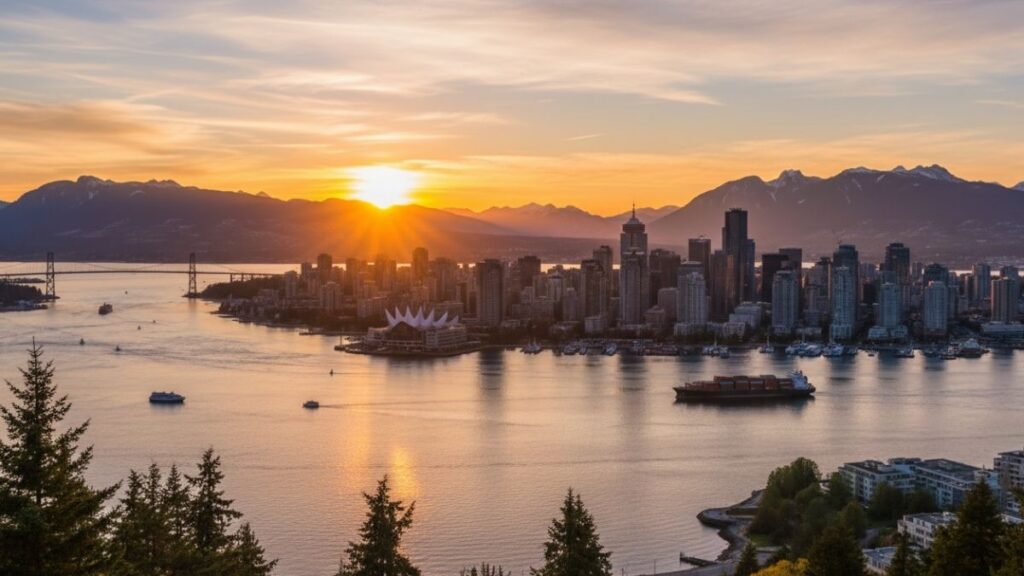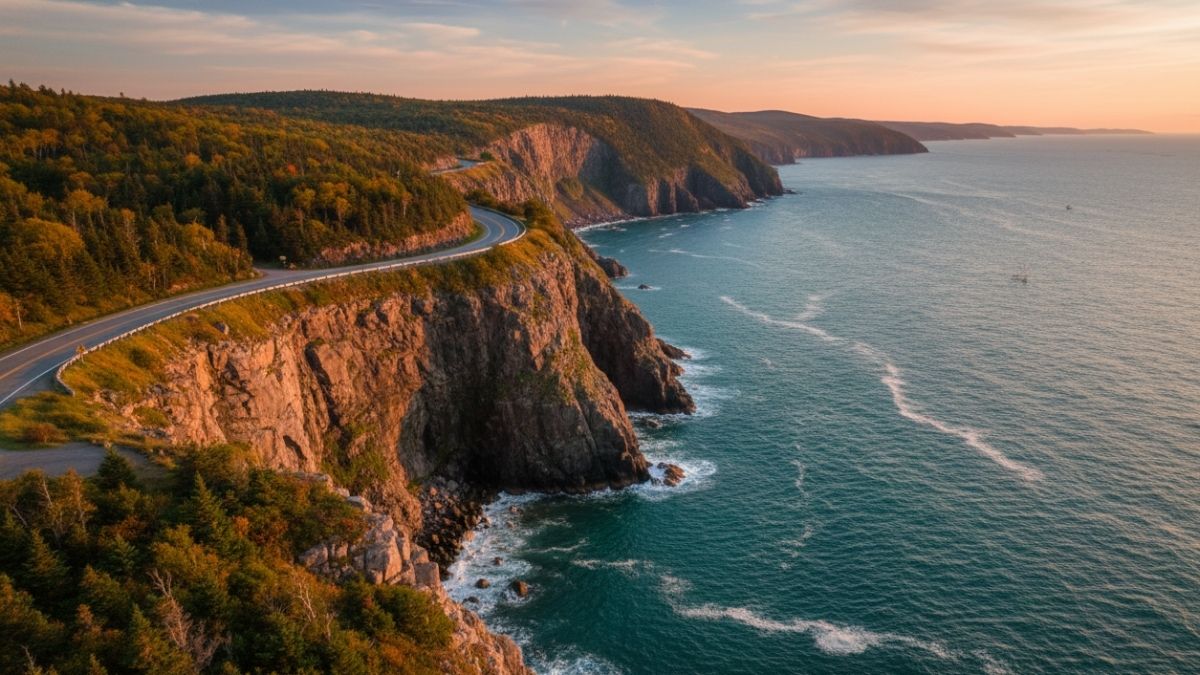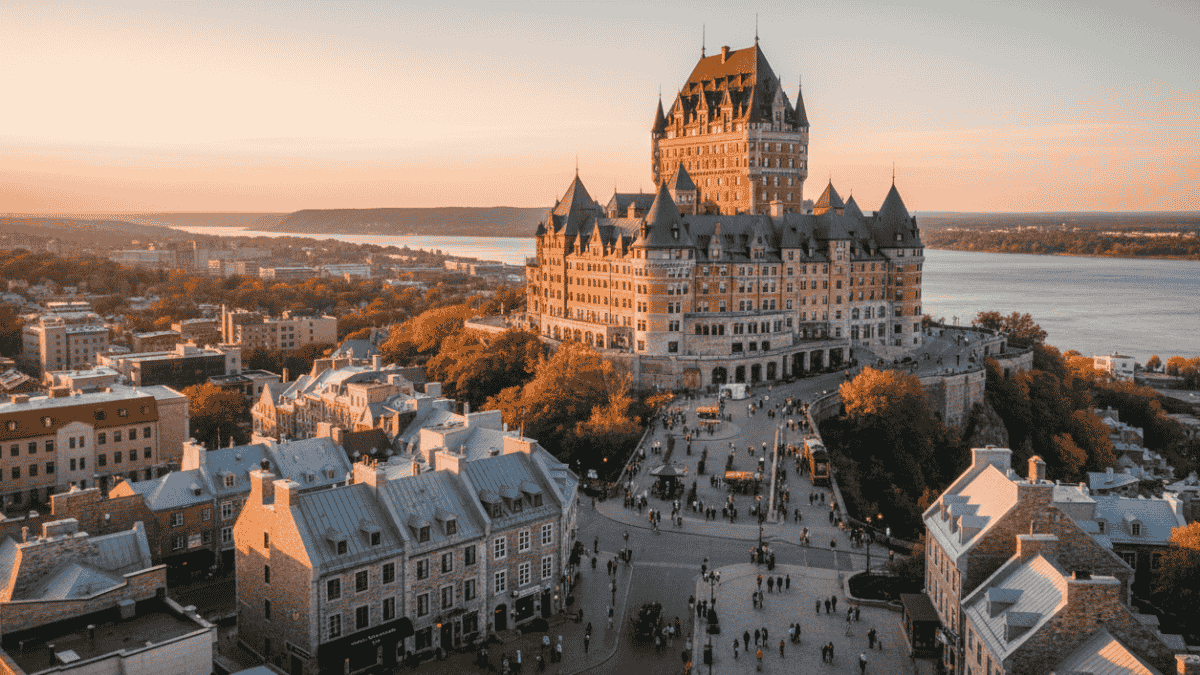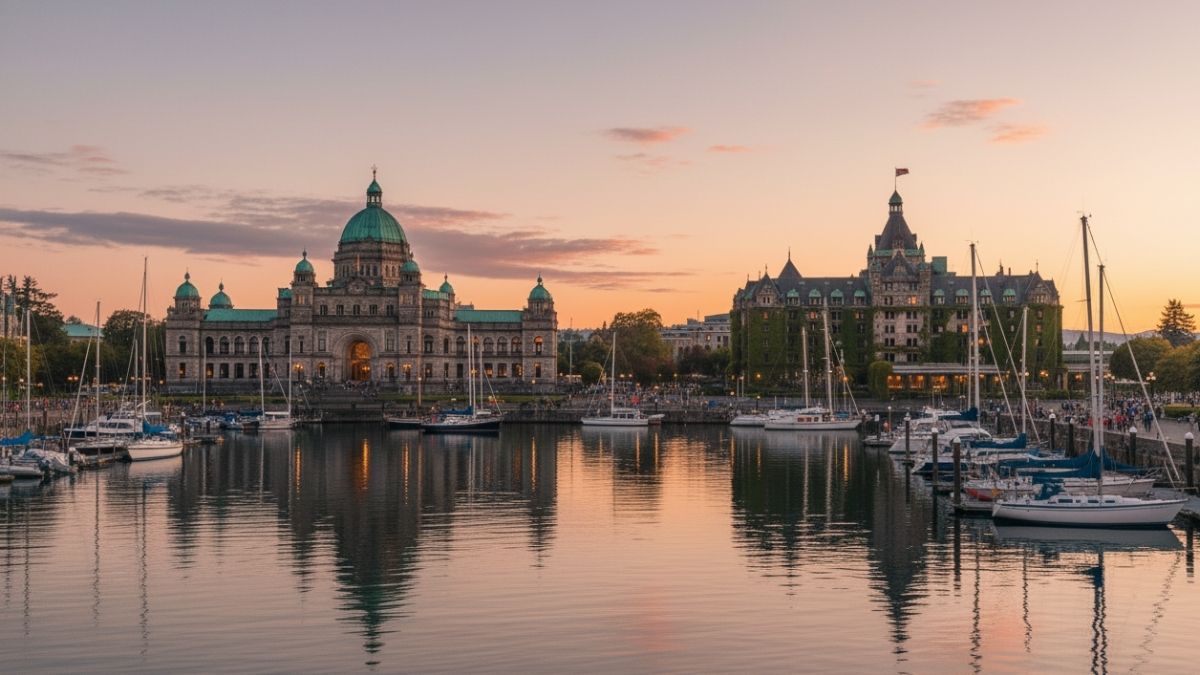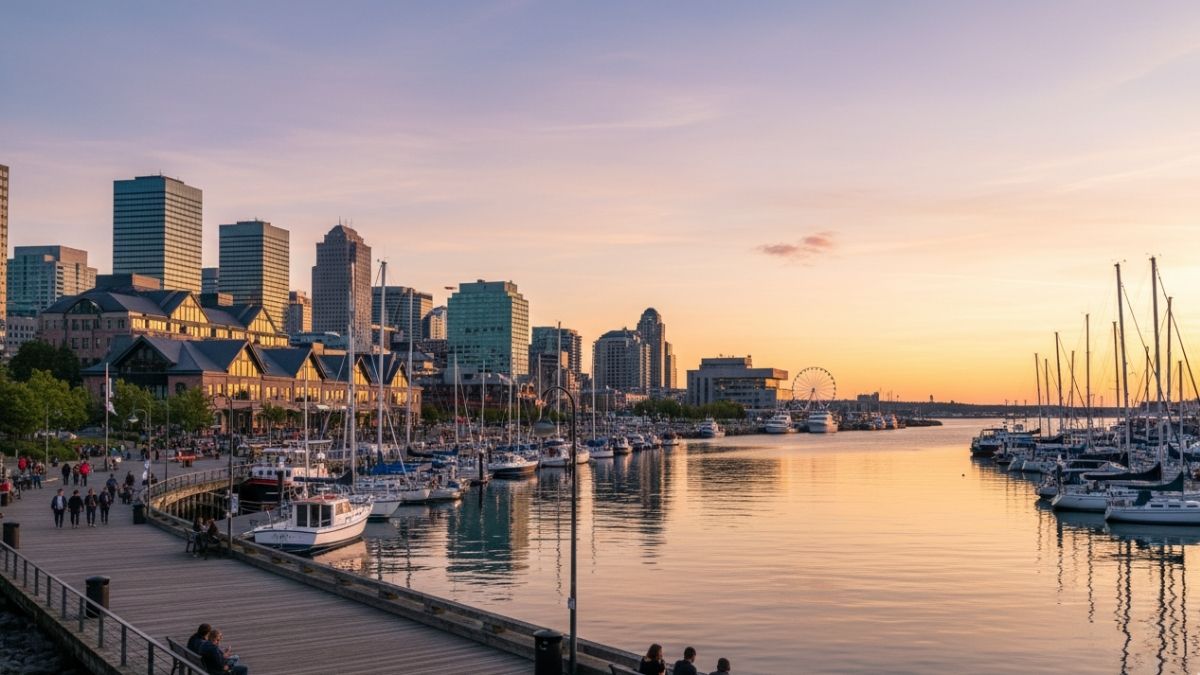Some cities charm you instantly. Others grow on you slowly. Vancouver does both. Nestled between the Pacific Ocean and the snow-dusted peaks of the Coast Mountains, this city feels like nature and modern life made a pact to get along — and it worked.
If you’ve ever dreamed of a place where you can ski, sail, and sip craft coffee all in one day, welcome to Vancouver. This isn’t just a stopover — it’s a destination that makes you want to stay longer, explore deeper, and breathe a little slower. Let’s dive into everything you need to know before you go — when to visit, where to stay, what to see, and how to truly experience this West Coast gem.
If you’d love the complete Vancouver experience — with detailed itineraries, packing tips, local laws, and insider travel advice — grab your FREE Vancouver Travel Guide eBook today.
If you prefer something you can flip through while sipping coffee by the bay, you can also order the paperback edition on Amazon or Lulu Bookstore.
Simply enter your name and email below to get instant access to your free download.
Planning your West Coast adventure just got easier with WorldTourGuide.
And while you’re at it, don’t miss our Traveler’s Toolkit — trusted by explorers in our travel community to plan smarter, pack lighter, and travel better.
You’ll thank yourself later for making this choice.
The Geography and Natural Wonder of Vancouver
Vancouver is a postcard that came to life. The city sits on the southwestern edge of British Columbia, hugging the Pacific coast with the Burrard Inlet running through its heart.

Just offshore, Vancouver Island acts as a natural barrier, softening the ocean’s wild moods and giving the city its mild, marine climate.
Behind the skyline, the North Shore Mountains rise dramatically — Grouse, Cypress, and Seymour. They’re not just pretty backdrops; they define the city’s rhythm. You can kayak in the morning, hike in the afternoon, and be downtown for sushi by dinner.
Stanley Park — a 1,000-acre rainforest right beside downtown — is the city’s green soul. Few cities in the world can boast a wilderness this large and this close. In places like Lynn Canyon or the Capilano area, you’ll find mossy trails, hanging bridges, and forests that feel ancient and alive.
You’ll meet rain, especially between fall and early spring. But don’t curse the drizzle — it’s what keeps the city lush and vibrant. Vancouver’s rain is soft, rhythmic, and somehow part of the charm.
Drive north and you’ll hit the legendary Sea-to-Sky Highway, a ribbon of road that winds through granite cliffs and fjords toward Whistler. Or hop a ferry west to Vancouver Island — where coastal magic continues in Victoria, Tofino, and beyond.
Here, the geography isn’t a backdrop — it’s the main story.
When to Visit: Best Seasons & Cultural Thunder
Vancouver is one of those rare destinations that shines year-round. The trick is choosing the version of the city you want to experience.
Spring (March–May): Cherry Blossoms and Fresh Air
As winter fades, Vancouver blooms. Cherry blossoms paint the streets pink, especially around Queen Elizabeth Park and Kitsilano. Temperatures sit comfortably between 10–17°C (50–63°F), and the city feels alive again.
Don’t Miss:
- Vancouver Cherry Blossom Festival — April’s most photogenic event.
- Vancouver International Wine Festival — late April or May, a treat for wine lovers.
- Reopened hiking trails at lower elevations — lush, quiet, and photogenic.
Summer (June–August): Long Days, Festival Nights
Summer in Vancouver is pure joy. The city hums with outdoor concerts, food truck festivals, and beach energy. Expect 20–27°C (68–80°F) temperatures and sunshine stretching past 9 p.m.
Highlights:
- Celebration of Light — international fireworks over English Bay.
- Vancouver Pride — vibrant, joyful, and unforgettable.
- Bard on the Beach — Shakespeare at sunset in Vanier Park.
It’s also peak season, so book hotels early and expect higher prices.
Fall (September–November): Golden Calm
As crowds thin, Vancouver takes a deep, beautiful breath. Leaves turn amber, the air grows crisp, and the rain softly returns.
Seasonal gems:
- Vancouver International Film Festival (VIFF) — late September.
- Harvest festivals in nearby Richmond and Fraser Valley.
- Stanley Park and Pacific Spirit Park — both stunning in fall colors.
Winter (December–February): Cozy Rain and Mountain Snow
Downtown stays mild (1–7°C or 34–45°F), but just 30 minutes away, the mountains turn white. You can ski Grouse or Cypress by day and enjoy cozy cafes by night.
Top winter experiences:
- Vancouver Christmas Market — mulled wine and lights by the water.
- Chinese New Year in Chinatown — lion dances and lanterns.
- Dine Out Vancouver — a citywide food festival in January.
Each season brings its own personality — soft spring, lively summer, reflective fall, and cozy winter. No matter when you come, the city always feels alive.
N.B.: If you organize your trip early and pack smart using our recommended travel gear essentials and trusted travel partners below, you’ll skip the “I wish I knew” stress. From booking flights to finding the best travel deals, these are the gears that make every journey smoother — and save you money while you’re at it.
Stanley Park & Seawall Bliss
Ask any local where to start, and they’ll say Stanley Park. It’s not just a park — it’s the heart of Vancouver.
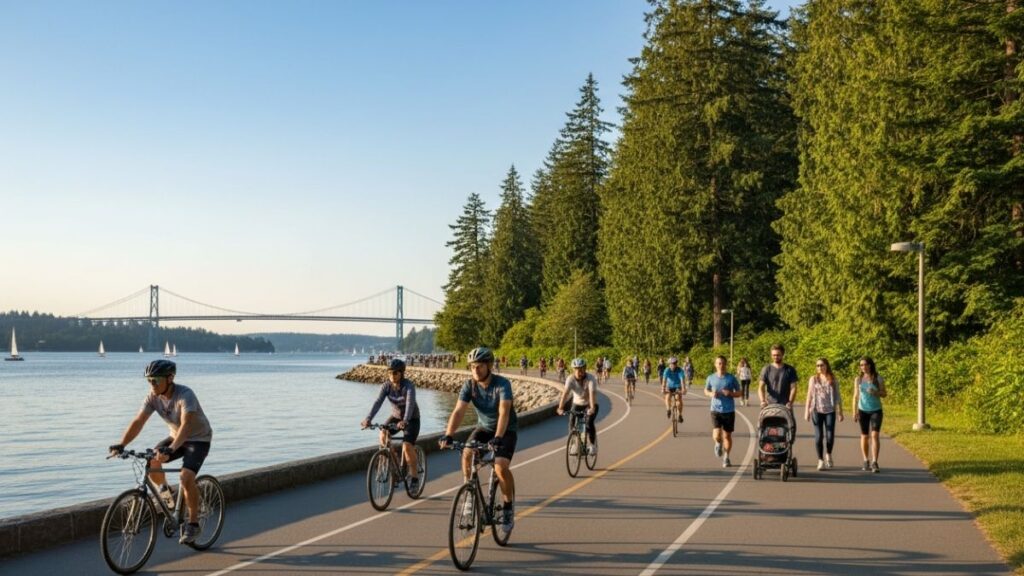
Covering 1,000 acres, this green wonder borders downtown and wraps around the ocean. The Seawall, a 9-kilometer paved loop, circles the park and offers some of the most spectacular views in Canada — from mountains to marinas to beaches.
Walk it, bike it, or just sit and watch the world drift by. Along the way, stop at:
- Brockton Point Totem Poles — a powerful tribute to Indigenous art and culture.
- Siwash Rock — a sea stack steeped in legend.
- Lions Gate Bridge Viewpoint — stunning, especially at sunset.
Inside the park, you’ll find rose gardens, quiet lagoons, and even the Vancouver Aquarium. Grab ice cream at English Bay, breathe in the salty air, and feel the rhythm of the city slow down. Rain or shine, Stanley Park never loses its magic.
Museums and Art That Beg a Kiss
Beyond the forests and mountains, Vancouver has an art scene that hums with creativity and soul.
Start with the Vancouver Art Gallery, home to both international exhibitions and local legends like Emily Carr. Then, step into the Museum of Anthropology (MOA) at UBC — a masterpiece of architecture and meaning, where totem poles and carved masks tell centuries of Indigenous stories.
In Vanier Park, the Museum of Vancouver, Maritime Museum, and Space Centre form a mini cultural district worth a full afternoon.
If you prefer something modern. The Contemporary Art Gallery downtown showcases bold, emerging voices — always fresh, always free.
And if you love performance, you’ll find it here too:
- The Orpheum Theatre for classical concerts.
- The Cultch for edgy, experimental plays.
- Open mic nights in East Van for poetry and local music.
Vancouver’s art isn’t loud — it’s thoughtful, grounded, and deeply tied to place.
For comprehensive travel ideas and must-see attractions, check out Tourism Vancouver’s official visitor site.
Gastown, Granville & Waterfront Glitz
Every great city has a few streets where its spirit truly comes alive. In Vancouver, those are Gastown, Granville Street, and the Waterfront.
Gastown is the city’s oldest neighborhood — cobblestone streets, vintage lampposts, and that famous Steam Clock. It’s a blend of history and hip, where indie boutiques sit beside cozy coffee houses. By night, its soft glow feels almost cinematic.
Granville Street, meanwhile, is the entertainment heartbeat — neon lights, live music, and energy that doesn’t sleep. The Commodore Ballroom and Orpheum Theatre host world-class shows, and the street hums with life well into the night.
Then there’s the Waterfront, stretching from Canada Place to Coal Harbour. Watch floatplanes take off, stroll along the promenade, or visit FlyOver Canada — a breathtaking virtual flight across the country.
You can walk from Gastown to Granville to the Waterfront in a single afternoon, feeling Vancouver’s old soul and modern pulse blend into one.
Best Areas to Stay: Pros & Cons to Maneuver
Where you stay in Vancouver shapes your trip — and there’s no wrong choice, only different rhythms.
Downtown Vancouver:
Perfect for first-timers. Walkable, vibrant, and packed with restaurants.
Pros: Central, scenic, full of options.
Cons: Pricey and busy.
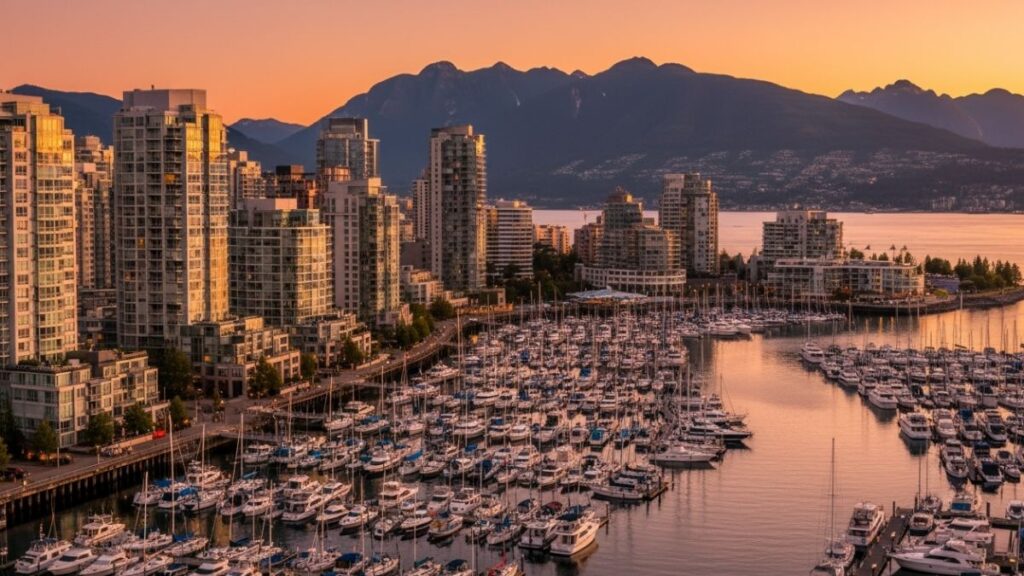
West End:
Bordering Stanley Park, this area feels local and peaceful.
Pros: Ocean views, beach access, and quiet charm.
Cons: Fewer large hotels.
Yaletown:
Trendy, upscale, and filled with restaurants and nightlife.
Pros: Modern vibe and waterfront dining.
Cons: Expensive and polished.
Gastown:
Historic, quirky, and photogenic.
Pros: Unique hotels and local character.
Cons: Some edges near East Hastings can feel sketchy.
Kitsilano:
Relaxed, beachy, and local.
Pros: Sunset views and community feel.
Cons: Farther from downtown.
North Vancouver:
Great for hikers and nature lovers.
Pros: Close to mountains, peaceful, and affordable.
Cons: A short ferry or bus ride to downtown.
Wherever you stay, you’ll find friendly locals, good food, and that signature coastal calm.
For local transport, parks, and visitor services, refer to the official City of Vancouver guide.
Laws Tourists Should Know (Alcohol, Smoking & Sips)
Vancouver’s chill — but it has rules. You can drink in certain public areas like English Bay Beach or Kitsilano Beach, where signs clearly mark “alcohol permitted zones.” Otherwise, stick to bars, patios, or restaurants.
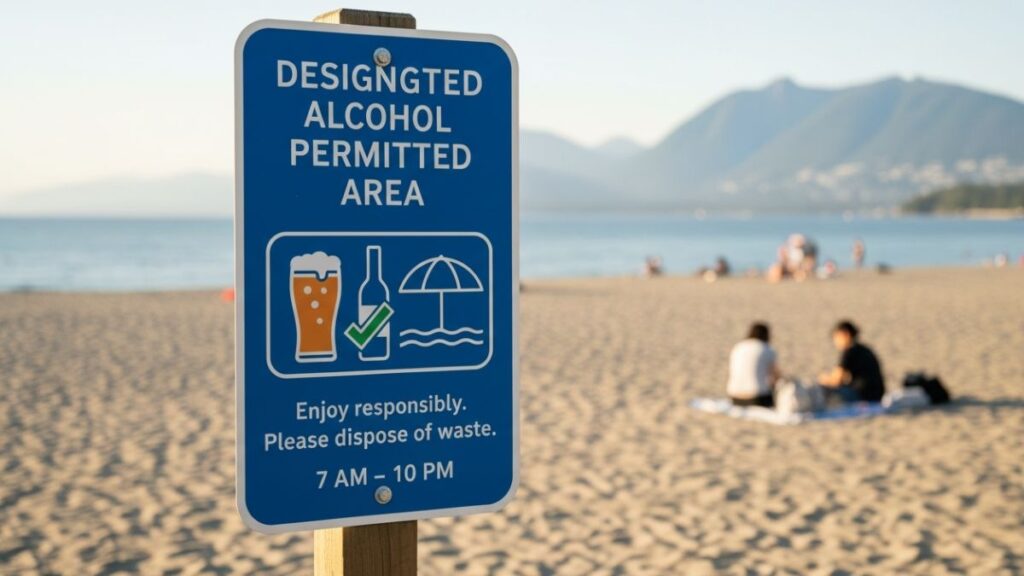
Cannabis is legal for those 19 and older but can’t be smoked near playgrounds, beaches, or public transit areas. Smoking and vaping are banned within 6 meters of building entrances, parks, and patios.
Buy alcohol from government or licensed stores — most close around 11 p.m. Break the rules, and you could face a fine of $200 or more.
Play it safe, follow the signs, and the city will treat you well.
Tips for Staying Safe and Aware
Vancouver is one of Canada’s safest cities — but awareness never hurts.
- Stay alert in East Hastings near Main Street. It’s safe but can be unsettling for first-timers.
- Expect quick weather changes — always pack a light rain jacket.
- Respect wildlife in parks and mountains. Never feed raccoons or approach bears.
- Stick to marked trails in places like Grouse or Lynn Canyon.
- Keep valuables close in busy spots like Granville Island or Robson Street.
- Transit is safe, clean, and efficient — but if someone acts odd, just move cars or alert staff.
In emergencies, dial 911. For non-urgent police matters, call 604-717-3321.
With a little common sense, you’ll find Vancouver wonderfully easygoing and safe to explore.
If you want to venture beyond Vancouver, Destination BC has great guides for the rest of British Columbia.
Tipping, Taxes & Payment Practices
Money talk — the practical stuff no one tells you.
Tipping:
- Restaurants: 15–20%
- Coffee shops: Optional, but rounding up is kind
- Taxis & rideshares: 10–15%
- Hotel staff: $2–5 per bag or per day
Taxes:
Prices never include tax. Expect a 12% addition (5% GST + 7% PST).
Hotels may charge around 15% including tourism fees.
Payments:
Vancouver is almost cash-free. Tap-to-pay, credit cards, and mobile payments rule. U.S. dollars aren’t accepted — use Canadian dollars or cards.
Exchange rate: roughly 1 USD = 1.30 CAD (check before travel).
Before we wrap up this travel guide, here’s something thrilling you won’t want to miss!
Our travel media agency, WorldTourGuide, has officially launched a Sponsored Trip Program — a once-in-a-lifetime opportunity where our most loyal fans, like you, can earn the chance to explore their dream destination.
If you’re ready to see where this adventure could take you, click here to learn how the program works and discover how you can join this purpose-driven travel experience.
Final Thought
Vancouver isn’t just another stop on your Canadian itinerary — it’s a feeling. It’s the quiet hum of rain on the Seawall, the taste of salt in the air, and the sight of mountains catching the last light of day.
Whether you’re wandering Gastown’s cobblestones or watching eagles soar over Stanley Park, one thing’s for sure: once you experience this city, part of you will remain even after you’ve left. And that brings our Vancouver journey to a beautiful close!
I’m wishing you safe travels and unforgettable moments as you stroll the Seawall, wander through Stanley Park’s misty trails, and watch the sunset paint the skyline in gold and pink.
📘 Remember your FREE Vancouver Travel Guide eBook — if you missed it earlier, simply enter your name and email below to get instant access.
You’ll also receive future updates, insider travel tips, and exclusive offers from WorldTourGuide to help you plan smarter, explore deeper, and travel better.
